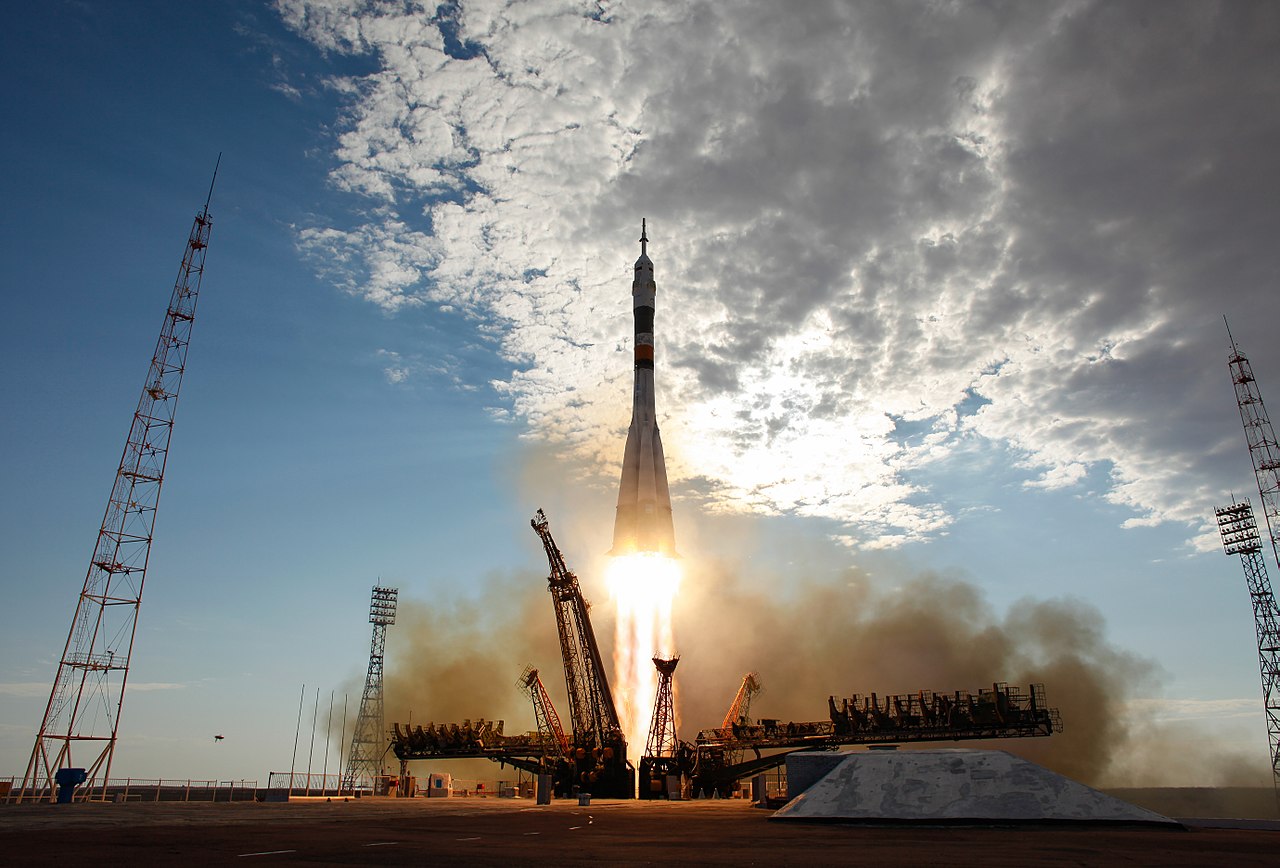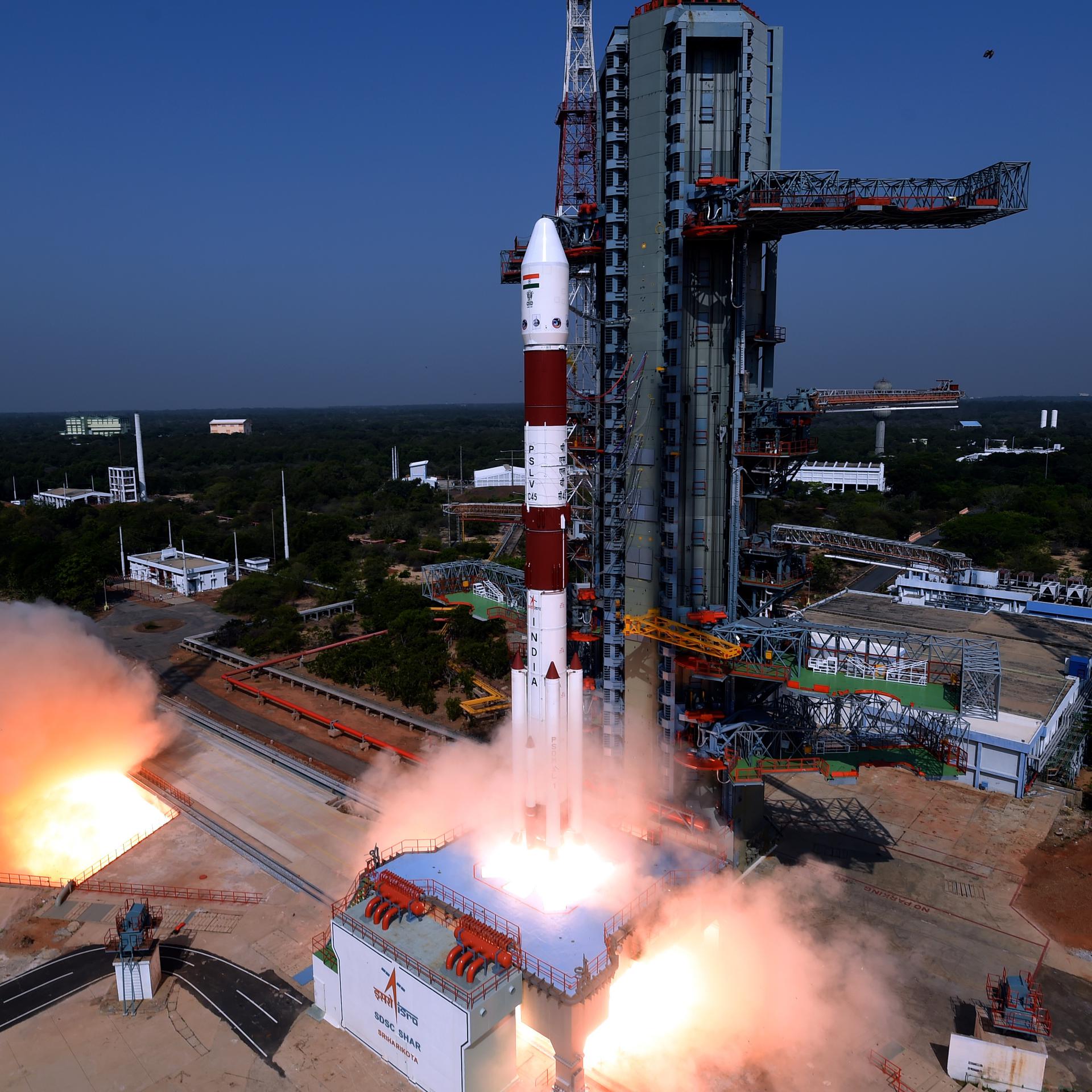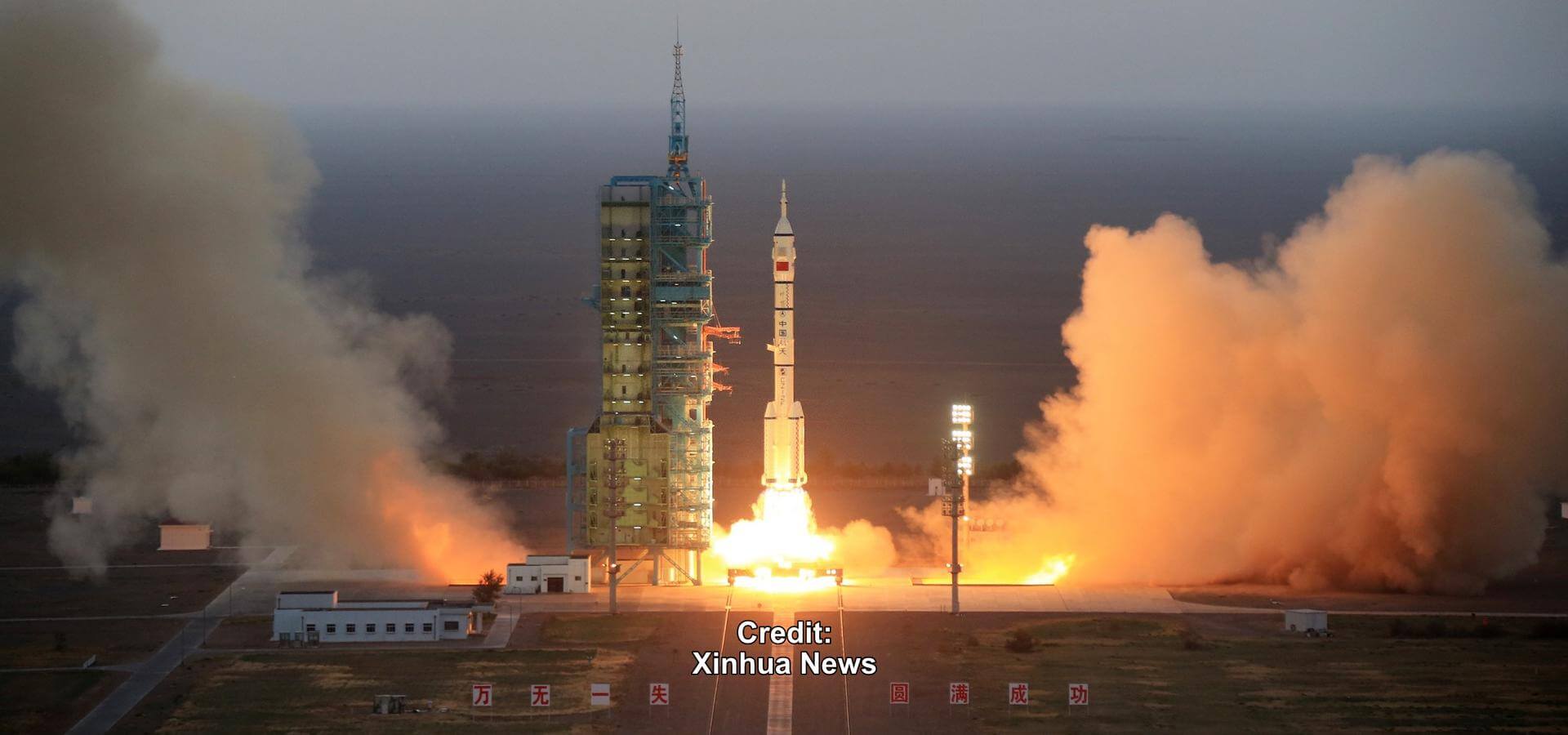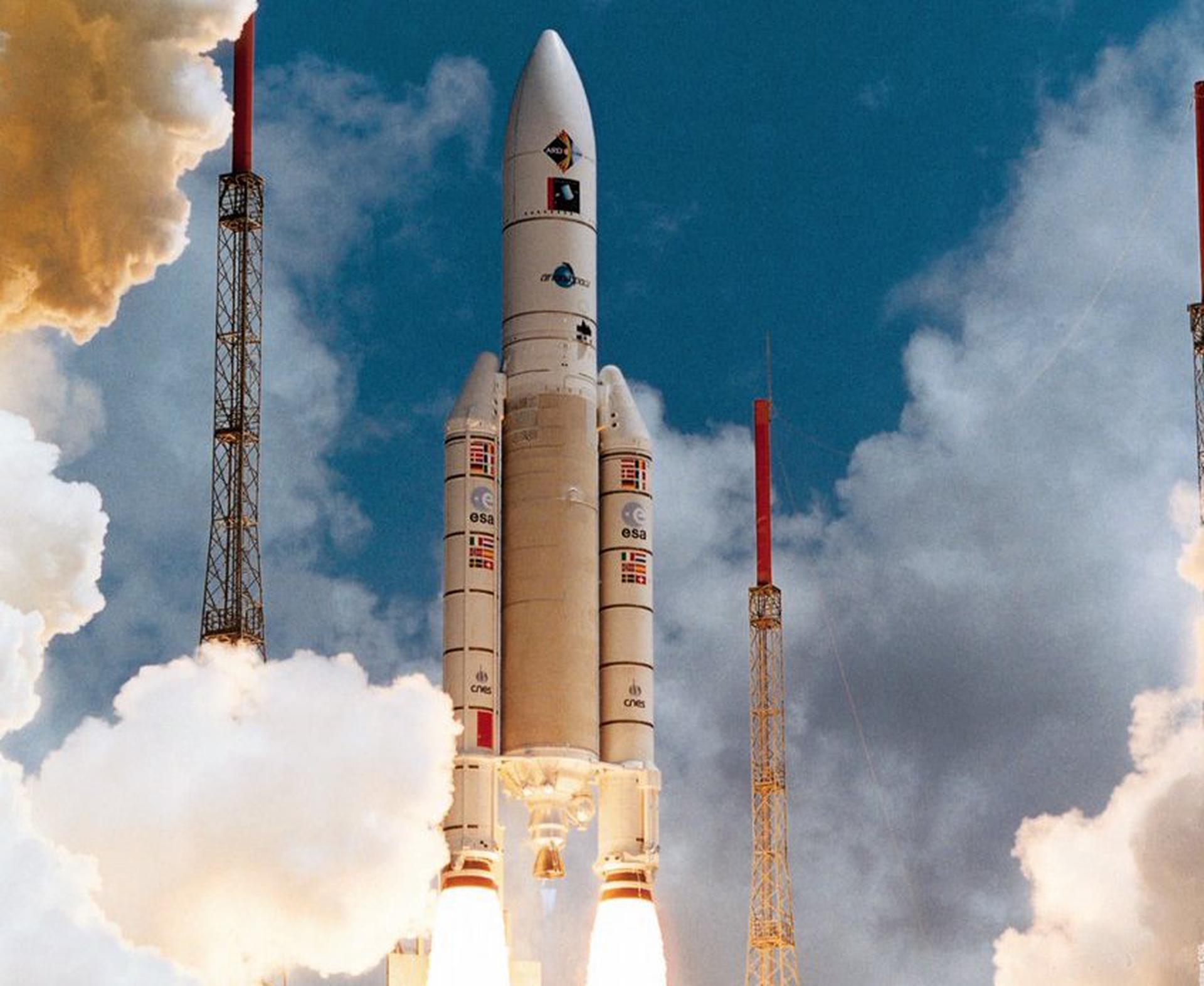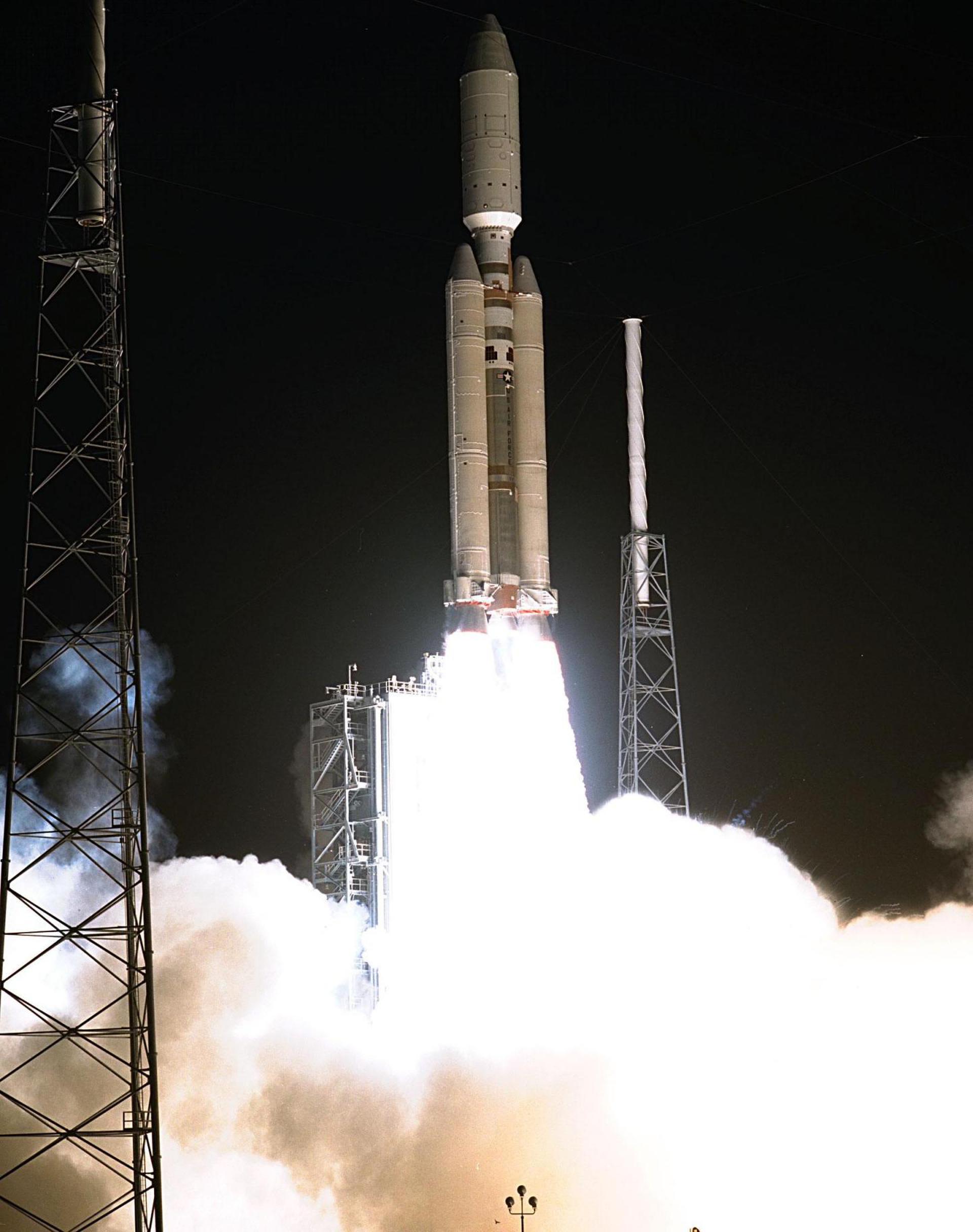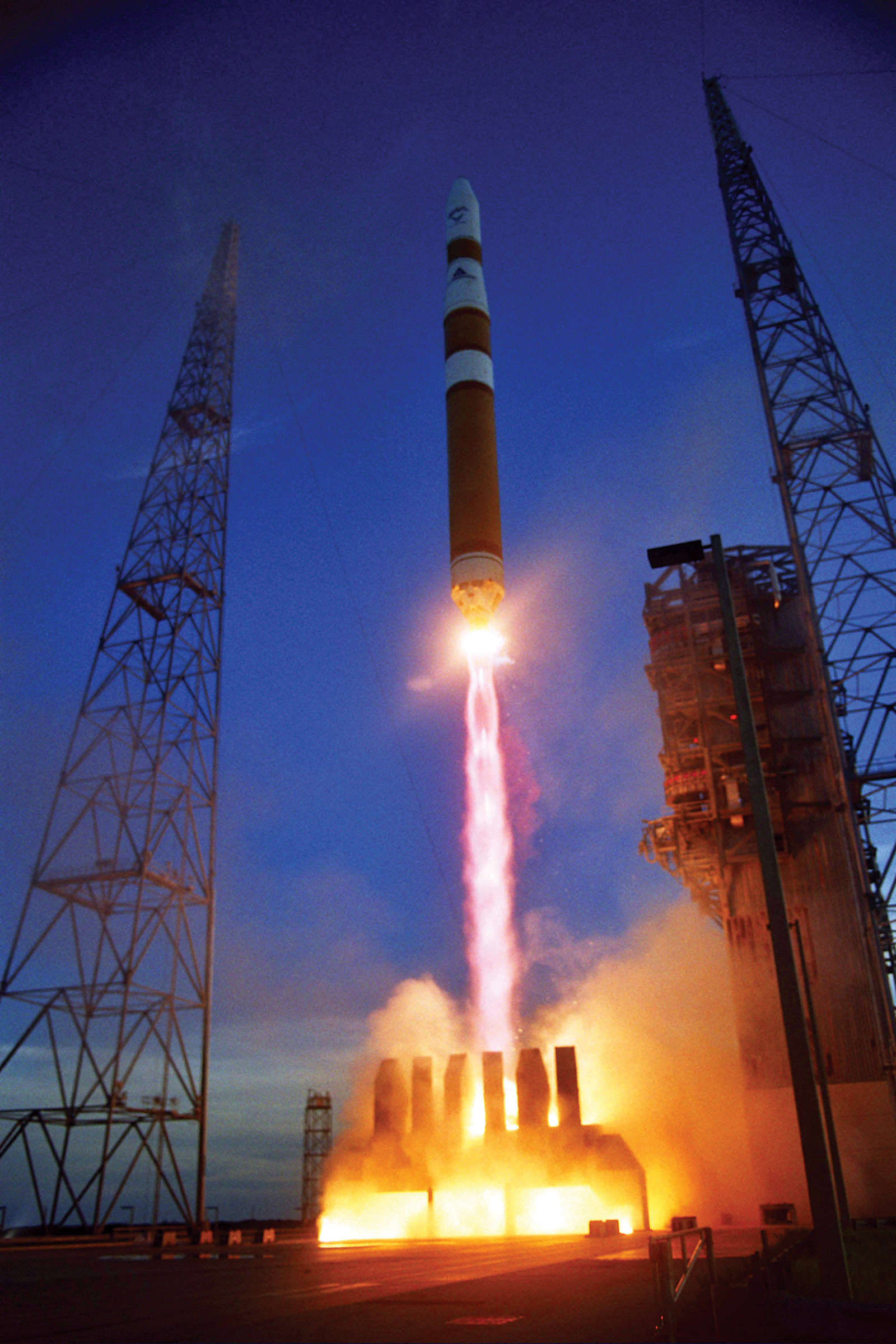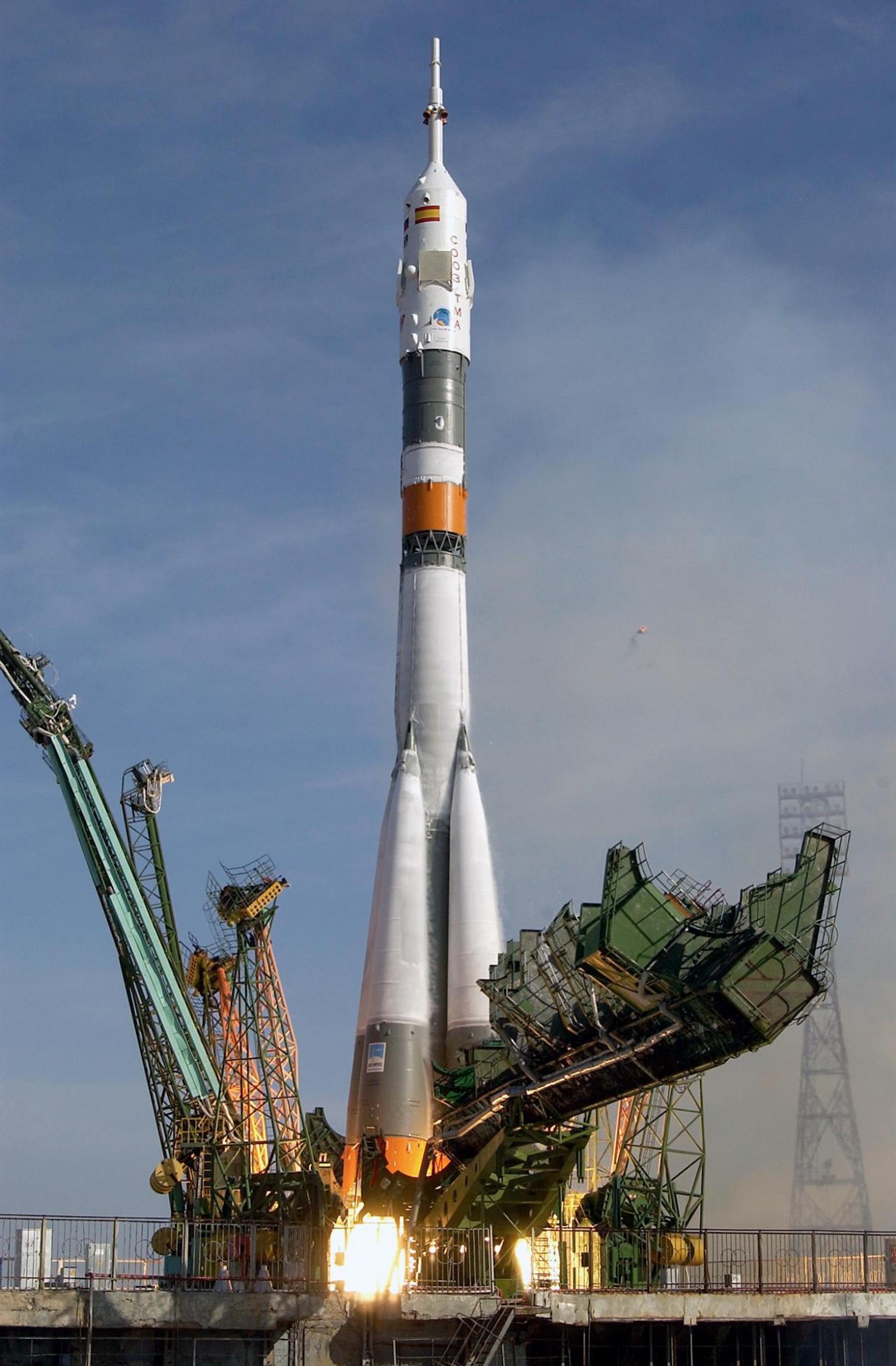Previous Spaceflight Launches
Filter by Agency, Locations or Vehicles
Show All LaunchesSoyuz-FG | Soyuz TMA-3
Progress Rocket Space Center | RussiaBaikonur Cosmodrome, Republic of Kazakhstan
Oct. 18, 2003, 5:38 a.m.
Status: Launch Successful
Mission:
Soyuz TMA-3 begins Expedition 8 by carrying 3 astronauts and cosmonauts to the International Space Station. Russian Commander, cosmonaut Alexander Kaleri alongside Flight Engineers, Michael Foale (NASA) & Pedro Duque (ESA) will launch aboard the Soyuz spacecraft from the Baikonur Cosmodrome in Kazakhstan and then rendezvous with the station. It landed on April 30, 2004, 00:11:15 UTC
Low Earth OrbitPSLV | Resourcesat
Indian Space Research Organization | IndiaSatish Dhawan Space Centre, India
Oct. 17, 2003, 4:52 a.m.
Long March 2F | Shenzhou-5
China Aerospace Science and Technology Corporation | ChinaJiuquan Satellite Launch Center, People's Republic of China
Oct. 15, 2003, 1 a.m.
Status: Launch Successful
Mission:
This is the first crewed mission for China's Shenzhou program. Launched in 15 October, it carried the only astronaut aborad, Yang Liwei, on an 21 hour flight. Shenzhou 5 completed 14 orbits, followed by a safe landing back on Earth on the evening of 15 October.
Low Earth OrbitZenit | Galaxy 13
Sea Launch | RussiaSea Launch
Oct. 1, 2003, 4:02 a.m.
Ariane 5 G | INSAT-3E, eBird 1, SMART-1
ArianeGroup | FranceGuiana Space Centre, French Guiana
Sept. 27, 2003, 11:14 p.m.
Status: Launch Successful
Mission:
INSAT-3A is a multipurpose satellite for providing telecommunications, television broadcasting, meteorological and search & rescue services. INSAT-3A payloads include Normal C-band transponders with expanded coverage from Middle East to South East Asia, Extended C-band transponders providing India coverage and Ku-band transponders providing India coverage. The satellite also carries one Data Relay Transponder (DRT) and one Satellite Aided Search and Rescue (SAS&R) payload. SAS&R payload has a global receive coverage with 406 MHz uplink and C-band downlink with India coverage for the relay of signals from distress beacons in sea, air or land.
Geostationary Transfer OrbitKosmos-3M | Mozhaets-4
Russian Space Forces | RussiaPlesetsk Cosmodrome, Russian Federation
Sept. 27, 2003, 6:11 a.m.
Kaituozhe-1 | Hangtian Tsinghua 1-02
China Aerospace Science and Industry Corporation | ChinaTaiyuan Satellite Launch Center, People's Republic of China
Sept. 16, 2003, 10:30 a.m.
Titan IVB | NROL-19
Lockheed Martin | United States of AmericaCape Canaveral SFS, FL, USA
Sept. 9, 2003, 4:29 a.m.
Delta IV M | DSCS III B-6
United Launch Alliance | United States of AmericaCape Canaveral SFS, FL, USA
Aug. 29, 2003, 11:13 p.m.
Soyuz U | Progress M-48
Russian Federal Space Agency (ROSCOSMOS) | RussiaBaikonur Cosmodrome, Republic of Kazakhstan
Aug. 29, 2003, 1:47 a.m.
